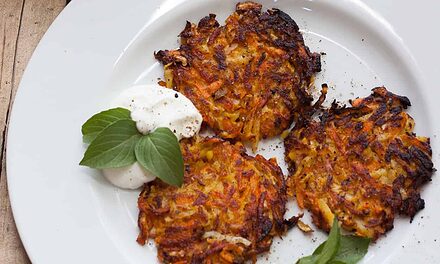By Marjory Sweet · Photos by Stephanie Cameron

In the United States, cow’s milk “does a body good,” while goat milk remains an exotic second choice. Worldwide, however, the opposite is often true. The benefits of goat milk are unique and numerous. Goat dairy can be digested more easily than cows. It takes about two hours to digest a glass of cow’s milk and only twenty minutes for goat’s. Goat milk contains less lactose molecules and less fat, so it is more accessible to lactose-intolerant and other sensitive systems.
If you are curious about goat milk, but wary to start pouring it in your morning coffee, I suggest making cheese. The simple transformation from liquid dairy to soft solid cheese is quick and gratifying. In its final stages, the cheese is salted and can be flavored with herbs, spices, or chiles, which takes the barnyard edge off the milk. I prefer a fresh cheese like this served simply: sliced onto thick, toasted sourdough, with some salty butter and chile flakes. An egg on top is never a bad idea. Enough mornings like these and you might find yourself craving a raw goat milk espresso alongside.

Fresh Goat Cheese
- 1 gallon goat milk (raw preferred)
- 1/4 tablet vegetable rennet dissolved in 1/4 cup cool water
- Salt to taste
In a large stainless steel pot, heat milk to 85–95°F. Stir in dissolved rennet. Cover, remove from heat, and let sit for 45 minutes. Line a sieve with 1 or 2 layers of cheesecloth and set over bowl. Using a long knife or spatula, make a series of cuts from top to bottom (both directions) in the curds. It will look like a checkerboard when you’re finished. This loosens the curds, making them easier to spoon out. Scoop cut curds into lined strainer, stirring gently to release excess liquid. When most of the liquid has drained, set it aside; you can use the whey for other projects. Salt curds to taste, and stir to distribute. Add any other herbs or spices at this point. Crushed local red chile is a nice option. Another favorite is fresh basil from your favorite farmer at the market (for summer cheese, of course). Pack into mold and set mold on a shallow plate to catch any residual draining. Cover with plastic wrap and refrigerate until completely cool and fully drained. Pour off the excess liquid that has collected on the plate and unmold. Slice or crumble and eat.
Cheese will stay fresh for 4 days.
Edible celebrates New Mexico's food culture, season by season. We believe that knowing where our food comes from is a powerful thing. With our high-quality, aesthetically pleasing and informative publication, we inspire readers to support and celebrate the growers, producers, chefs, beverage and food artisans, and other food professionals in our community.












